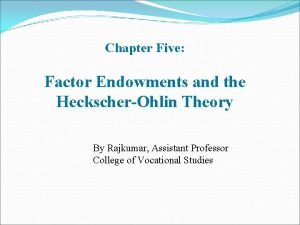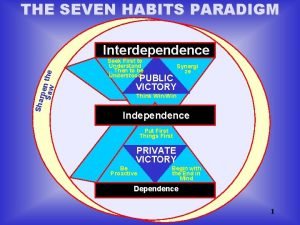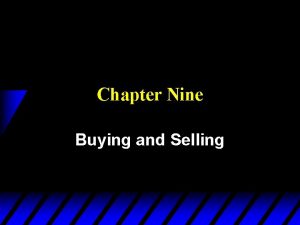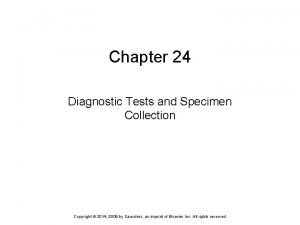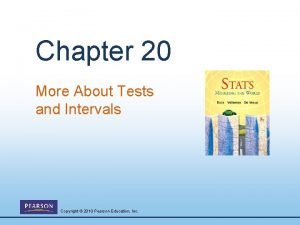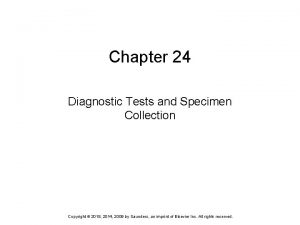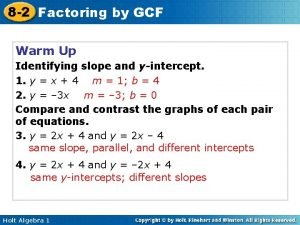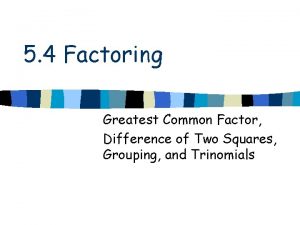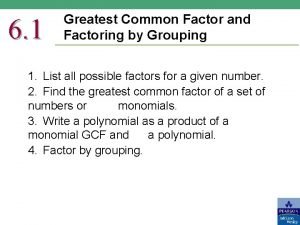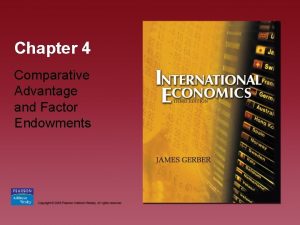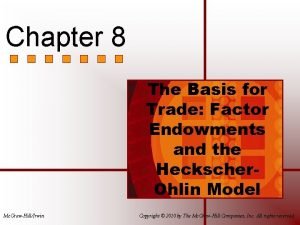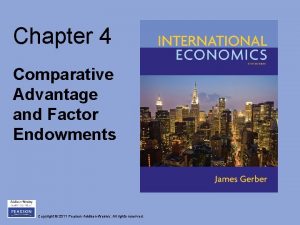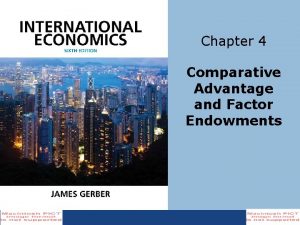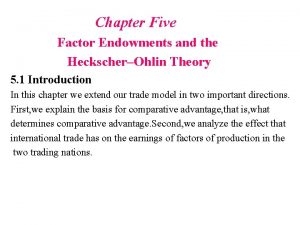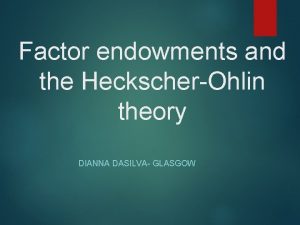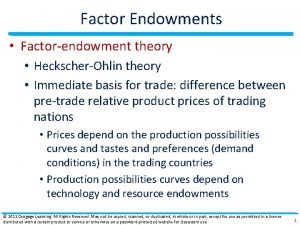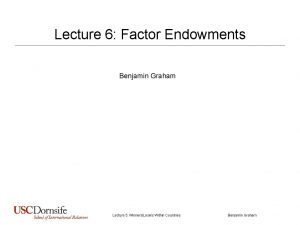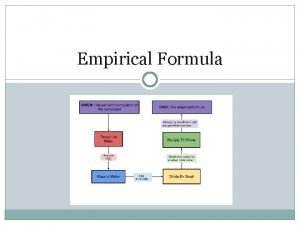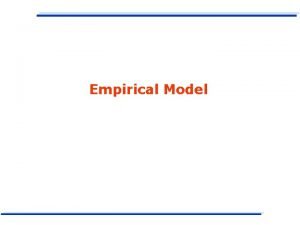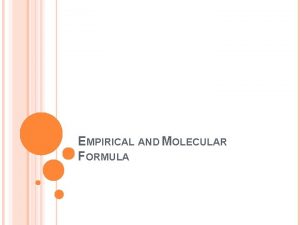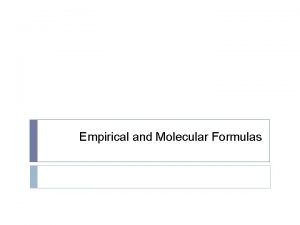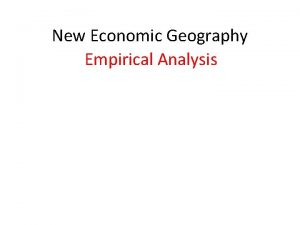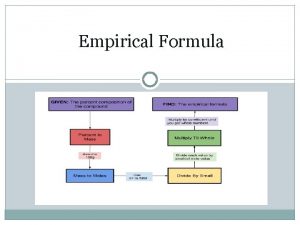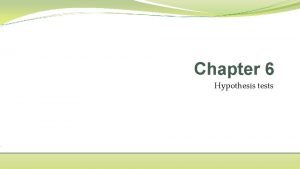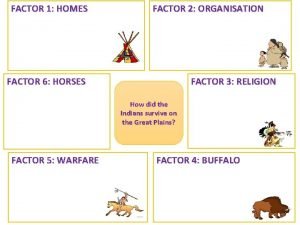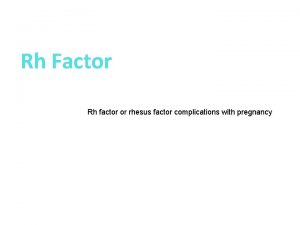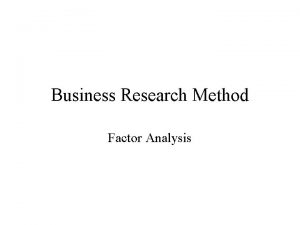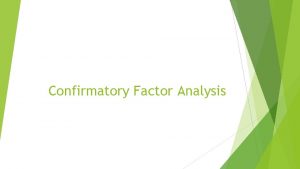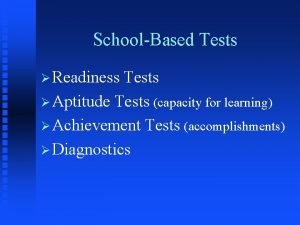Chapter 9 Empirical Tests of the Factor Endowments






























- Slides: 30

Chapter 9 Empirical Tests of the Factor Endowments Approach Mc. Graw-Hill/Irwin Copyright © 2010 by The Mc. Graw-Hill Companies, Inc. All rights reserved.

Learning Objectives § Analyze the failure of U. S. trade patterns to conform to H-O predictions. § Examine possible explanations for the U. S. trade paradox. § Describe issues arising from multicountry H-O tests. § Assess the role of trade in generating growing income inequality in developed countries. 9 -2

Leontief’s Test § 1950 s: Leontief conducts the first important test of H-O. § Using U. S. data Leontief calculated • average amount of capital and labor embodied in U. S. exports. • average amount of capital and labor embodied in U. S. imports. 9 -3

Leontief’s Test § Presumably, the U. S. was relatively K-abundant at that time. § Therefore, according to the H-O model, the U. S. should tend to export K-intensive products, and import L-intensive products. § That is, the capital-labor ratio for U. S. exports should be greater than the capital-labor ratio for U. S. imports. 9 -4

The Leontief Paradox § Leontief found something surprising: (K/L)exports = $13, 991 person-year (K/L)imports = $18, 184 person-year § This is the opposite of what the H-O model predicts. § This finding came to be known as the Leontief Paradox. 9 -5

The Leontief Paradox § To see this from another angle, consider the Leontief statistic • [(K/L)imp]/[(K/L)exp] • If H-O-S is correct, this statistic should be less than one for the U. S. § However, Leontief found the statistic to be ($18, 184/$13, 991) or about 1. 3. 9 -6

Explanations for the Leontief Paradox § Much research since Leontief’s time has focused on trying to explain the paradox. § Do any of these explanations “rescue” the H-O model, or is the model just wrong? 9 -7

Explanation #1: Demand Reversals Recall: when the K-abundant country has very strong domestic demand for the K-intensive product, and the Labundant country has very strong domestic demand for L-intensive products, there can be a demand reversal: the K-abundant country will export the L-intensive product because it has the relative cost advantage in it. 9 -8

Explanation #1: Demand Reversals § Therefore, the H-O theorem breaks down. § If demand reversals are commonplace, we might expect the U. S. to export relatively laborintensive products. 9 -9

Explanation #1: Demand Reversals § So: is there any evidence for widespread demand reversals? • No. Demand patterns are actually quite similar, at least among industrialized countries. • Furthermore, demand reversals imply that U. S. wages should be low. This would be a hard argument to support. § We need to look further to explain the paradox. 9 -10

Explanation #2: Factor Intensity Reversals § Recall: a FIR occurs when a good is relatively K-intensive at one set of factor prices, but relatively Lintensive at another. § If FIRs occur often, the H-O theorem cannot be valid for both countries, and so we might expect the Leontief paradox. 9 -11

Explanation #2: Factor Intensity Reversals § Minhas (1962) found evidence that FIRs are fairly commonplace. § Later work by Hufbauer (1966) and Ball (1966) suggests that Minhas overstated the matter; there may be some FIRs in the real world, but not as many as Minhas suggested. § It would seem that if there is an explanation of the Leontief paradox, it lies elsewhere. 9 -12

Explanation #3: The U. S. Tariff Structure § The H-O model assumes free trade, but in fact there are barriers (e. g. , tariffs). § The Stolper-Samuelson theorem leads us to expect that the owners of the scarce factor will be protectionist. § In the U. S. , this will likely mean that it is L-intensive imports that are being kept out. 9 -13

Explanation #3: The U. S. Tariff Structure § The tariff structure could make the Leontief statistic artificially high, and perhaps lead to the paradox. § Consider an example: 9 -14

Explanation #3: The U. S. Tariff Structure (An Example) 9 -15

Explanation #3: The U. S. Tariff Structure (An Example) 9 -16

Explanation #3: The U. S. Tariff Structure (An Example) § Suppose that (K/L)exp = $16, 000. § Then the fact that tariffs exist means that the Leontief statistic is $18, 333/$16, 000 = 1. 14; it would have been $14, 500/$16, 000 = 0. 9 under the assumption of free trade. § This means that Leontief’s paradox might be the result of tariffs, and isn’t evidence against the H-O model. 9 -17

Explanation #3: The U. S. Tariff Structure § A study by Baldwin (1971) suggests that (K/L)imp for the U. S. would be about 5% lower if we allow for the tariff structure. § This would lower Leontief’s statistic from 1. 3 to 1. 23. § This lessens the extent of the paradox without explaining it all. 9 -18

Explanation #4: Adding Other Factors of Production § Keesing (1966) suggests subdividing labor into eight skill categories. § He found that the U. S. exports a lot of skilled labor-intensive products; it is the unskilled labor-intensive products that we tend to import. 9 -19

Explanation #4: Adding Other Factors of Production § Since the U. S. is relatively skilled labor-abundant, this suggests that the H-O model does explain trade accurately: the Leontief Paradox disappears. § Later studies have supported this finding. 9 -20

Explanation #4: Adding Other Factors of Production § Leontief (1956) and Hartigan (1981) found that adding natural resources as a factor of production eliminates the paradox. § However, Baldwin (1971) found that adding natural resources does not completely eliminate the paradox. 9 -21

The Leontief Paradox: The Bottom Line § Allowing for demand reversals, FIRs, the tariff structure and natural resources as a factor of production may lessen the extent of the paradox. § Allowing for different levels of skill in the labor force does seem to eliminate the paradox. § The H-O model appears to be serviceable. 9 -22

Tests of the H-O Model for Other Countries § Many studies provide support for H-O • Stolper and Roskamp (1961): East Germany • Tatemoto and Ichimura (1959): Japan • Rosefielde (1974): USSR § Other studies did not support H-O • Wahl (1961): Canada • Bharadwaj (1962): India 9 -23

More Recent Tests of H-O § Stern and Maskus (1981) looked at exports and imports for 128 different U. S. industries. § They estimated the following regression equation: (X - M) = -18. 54 - 0. 08 K + 0. 06 H - 2. 83 L 9 -24

More Recent Tests of H-O (X - M) = -18. 54 - 0. 08 K + 0. 06 H - 2. 83 L § Interpretation: • the more K an industry uses the less is exported. • the more labor an industry uses the less is exported. • the more human capital an industry uses the more is exported. § This is basically the same finding as Keesing’s. 9 -25

More Recent Tests of H-O § Harkness and Kyle (1975) • added natural resources to the regression equation. • found similar results: the Leontief paradox can be resolved by considering other factors besides just K and L. 9 -26

More Recent Tests of H-O § Maskus (1985), Bowen et al. (1987), Gourdon (2009), and Muriel and Terra (2009) have also added multiple factors of production. § In general, their results conform with the predictions of the H-O model. 9 -27

More Recent Tests of H-O § However these “H-O – friendly” studies have been called into question. • Differences between calculated and actual factor abundances. • Trefler’s “home bias. ” 9 -28

Testing H-O: The Bottom Line § The H-O model has flaws, especially in its most simplistic forms. § It is still a model that can explain real world trade patterns. 9 -29

The H-O Model and Income Inequality § Over the past several decades, income and wage inequality have been rising in the U. S. and in Europe. § Since this period also involved rising levels of involvement in international trade, some argue that trade has caused the inequality. § While trade may play a role in this, most economists believe it is not a dominant role. 9 -30
 Factor endowment theory
Factor endowment theory 7 habits paradigm
7 habits paradigm Selling endowments
Selling endowments ıniqlo
ıniqlo Chapter 24 diagnostic tests and specimen collection
Chapter 24 diagnostic tests and specimen collection Chapter 20 more about tests and intervals
Chapter 20 more about tests and intervals Chapter 24 diagnostic tests and specimen collection
Chapter 24 diagnostic tests and specimen collection Factoring examples
Factoring examples Factoring greatest common factor
Factoring greatest common factor Form factor and crest factor
Form factor and crest factor Example of situation producing questions
Example of situation producing questions Factor by greatest common factor
Factor by greatest common factor What is the greatest common factor of 48 and 60?
What is the greatest common factor of 48 and 60? Hát kết hợp bộ gõ cơ thể
Hát kết hợp bộ gõ cơ thể Ng-html
Ng-html Bổ thể
Bổ thể Tỉ lệ cơ thể trẻ em
Tỉ lệ cơ thể trẻ em Chó sói
Chó sói Tư thế worms-breton
Tư thế worms-breton Alleluia hat len nguoi oi
Alleluia hat len nguoi oi Các môn thể thao bắt đầu bằng từ đua
Các môn thể thao bắt đầu bằng từ đua Thế nào là hệ số cao nhất
Thế nào là hệ số cao nhất Các châu lục và đại dương trên thế giới
Các châu lục và đại dương trên thế giới Cong thức tính động năng
Cong thức tính động năng Trời xanh đây là của chúng ta thể thơ
Trời xanh đây là của chúng ta thể thơ Mật thư anh em như thể tay chân
Mật thư anh em như thể tay chân 101012 bằng
101012 bằng Phản ứng thế ankan
Phản ứng thế ankan Các châu lục và đại dương trên thế giới
Các châu lục và đại dương trên thế giới Thơ thất ngôn tứ tuyệt đường luật
Thơ thất ngôn tứ tuyệt đường luật Quá trình desamine hóa có thể tạo ra
Quá trình desamine hóa có thể tạo ra
